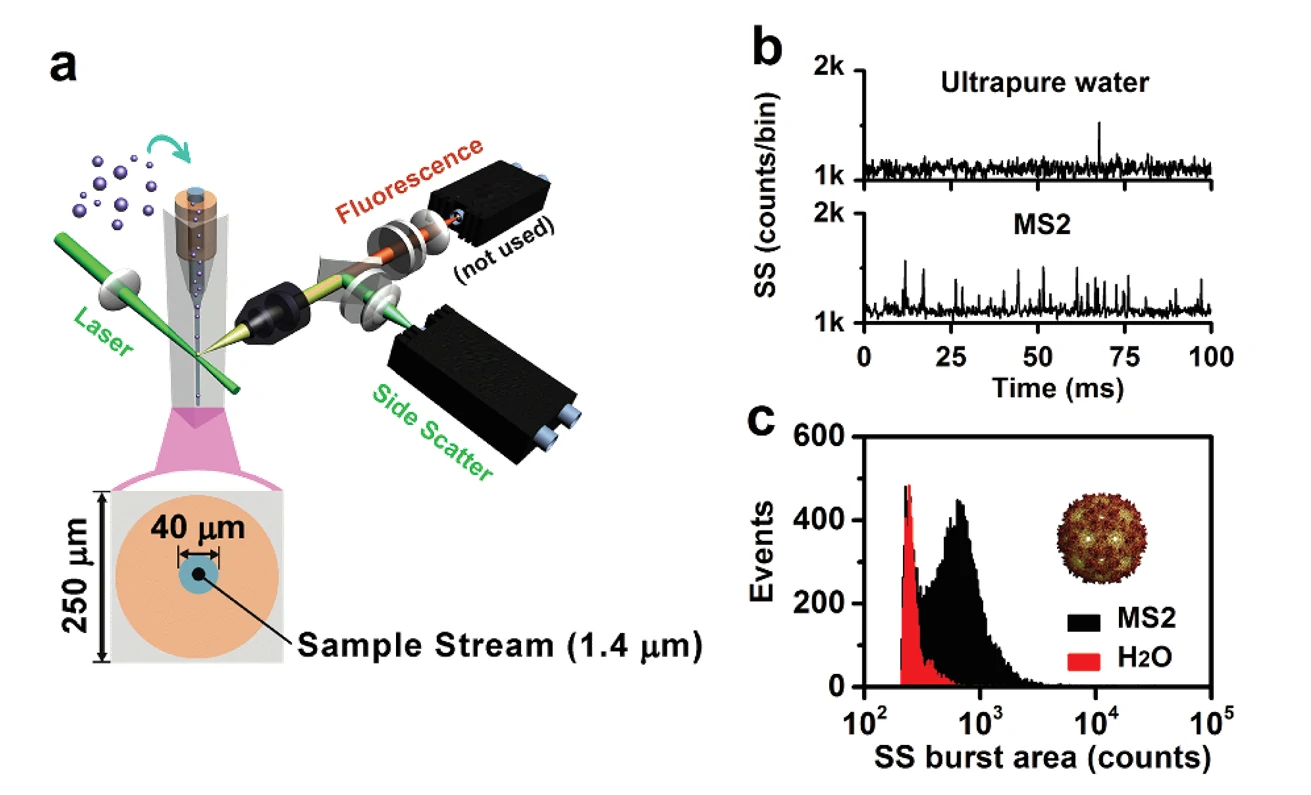Label-Free Detection of 27 nm MS2
Author: admin Date: February 21, 2024
Viruses are by far the most abundant biological entities on our planet. While animal viruses are notoriously responsible for many fatal diseases, plant viral pathogens cause significant losses in crop yields worldwide each year. On the other hand, the high transfection efficiency of viral gene-therapy vectors and the monodisperse structures that have a precise shape and size make viral particles powerful drug delivery vehicles and versatile nanotechnological building blocks. Therefore, high-resolution and high-throughput analysis of single viral particles are in high demand for virology research, disease diagnosis and treatment, and biotechnology and nanotechnology applications.
However, due to the small size (mostly ranging from 20-200 nm in diameter) and simple structure of viruses, conventional flow cytometry, which focuses on particles larger than 200 nm, is not the best option for virus detection. There is a great necessity for the development of advanced approaches enabling rapid, label-free, and accurate detection of viruses at the single-particle level. The development of the Flow NanoAnalyzer opens a new avenue for virus characterization

Figure 1. Label-free detection of levivirus MS2 by the Flow NanoAnalyzer.
The virus used in this experiment is levivirus MS2, which is a non-enveloped, spherical virion about 27 nm in diameter. The genome is monopartite, linear ssRNA (+), approximately 3.5 kb in size. The signal-to-noise (S/N) ratio, calculated as the average burst height of all the nanoparticles detected in 1 min divided by the standard deviation of the background signal (noise), is 11 for the MS2 viruses. This indicates that the Flow NanoAnalyzer provides exceptional sensitivity in discerning MS2 viruses against the background noise. This level of sensitivity could meet the detection demands of most virus nanoparticles in nature.
Angew. Chem. Int. Edit., 2016, 55(35), 10239-10243.




